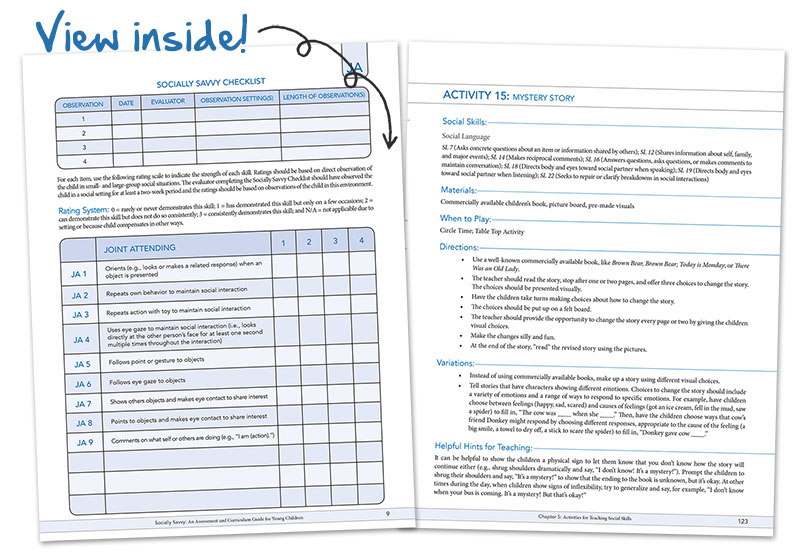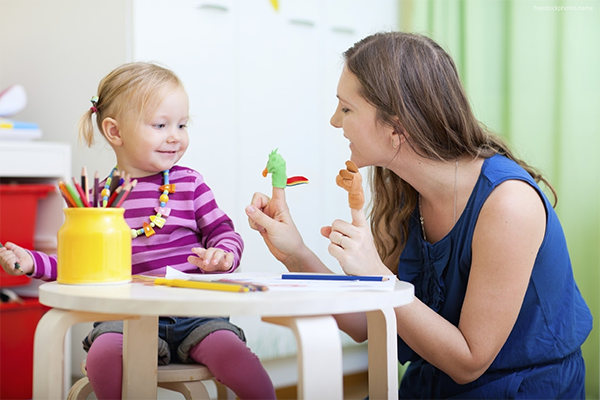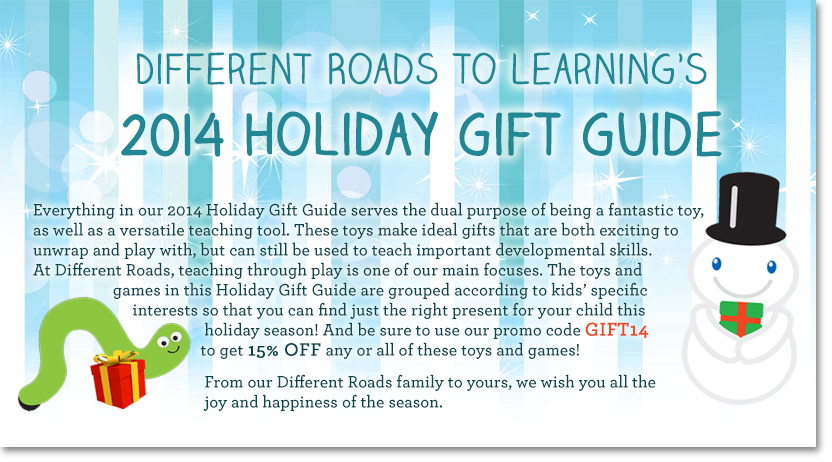 No child should be left to flounder in a confusing world of social nuances and expectations. Social competencies pave the way for a child to have fun at birthday parties, resolve conflicts with friends, feel heard, and stand up for oneself.
No child should be left to flounder in a confusing world of social nuances and expectations. Social competencies pave the way for a child to have fun at birthday parties, resolve conflicts with friends, feel heard, and stand up for oneself.
As our Pick this week, we’re thrilled to feature our newly printed assessment and curriculum guide Socially Savvy. Get your copy for an introductory price of only $39.95!
Socially Savvy: An Assessment and Curriculum Guide for Young Children helps educators and parents break down broad areas of social functioning into concrete skills. The included checklist pinpoints a child’s specific strengths and challenges—which in turn makes it possible to prioritize the skills most in need of intervention, develop strategies to address them, and track the effectiveness of those strategies.
This manual includes targeted, play-based activities that foster the development of social skills critical to a joyful childhood and future academic success. Socially Savvy is designed for all parties—from educator to the parent—working with children in planned and naturally occurring opportunities to help develop essential social skills. This manual serves as a resource to make both learning and teaching social skills a fun, rewarding experience. This guide:
- Introduces the Socially Savvy Checklist and how to effectively integrate it
- Describes the 7 areas of social development in detail
- Provides skill-specific sample IEP objectives
- Offers detailed step-by-step teaching plans
- Includes 50 specific games and activities for teaching targeted social skills
- Offers specific ideas on progress assessment and data collection
- Shares two case studies to illustrate the process from initial assessment to intervention and data collection
Soft cover, 256 pages, by James T. Ellis, PhD, BCBA-D and Christine Almeida, MSEd, EdS, BCBA.
Don’t forget—you can get your copy of Socially Savvy: An Assessment and Curriculum Guide for Young Children for our introductory price of only $39.95 for a limited time. No promo code necessary.




 All of these mandates are essential to helping my students to progress, but they also serve to overlook my students’ strengths. There is little space on an IEP to focus on what my student is quite skilled at, or to detail a plan for encouraging those skills. The long-term implications of failing to nurture a student’s strengths range from increasing boredom and frustration in school to failing to prepare students for engaging careers.
All of these mandates are essential to helping my students to progress, but they also serve to overlook my students’ strengths. There is little space on an IEP to focus on what my student is quite skilled at, or to detail a plan for encouraging those skills. The long-term implications of failing to nurture a student’s strengths range from increasing boredom and frustration in school to failing to prepare students for engaging careers.






 In general, when we make choices about how to behave, whether we are aware of it or not, we choose the behavior that gets the best results with the least response effort. But if a low response effort achieves poor results, we’re probably not going to engage in that behavior. Let’s look at an example of choosing a higher response effort. Let’s say I live down the street from a hair salon, and I go there once but hate my hair cut. I’ll engage in the higher response effort to drive 30 minutes to a salon that gives me a great cut. I want the lowest response effort, but not if it achieves poor results.
In general, when we make choices about how to behave, whether we are aware of it or not, we choose the behavior that gets the best results with the least response effort. But if a low response effort achieves poor results, we’re probably not going to engage in that behavior. Let’s look at an example of choosing a higher response effort. Let’s say I live down the street from a hair salon, and I go there once but hate my hair cut. I’ll engage in the higher response effort to drive 30 minutes to a salon that gives me a great cut. I want the lowest response effort, but not if it achieves poor results.

